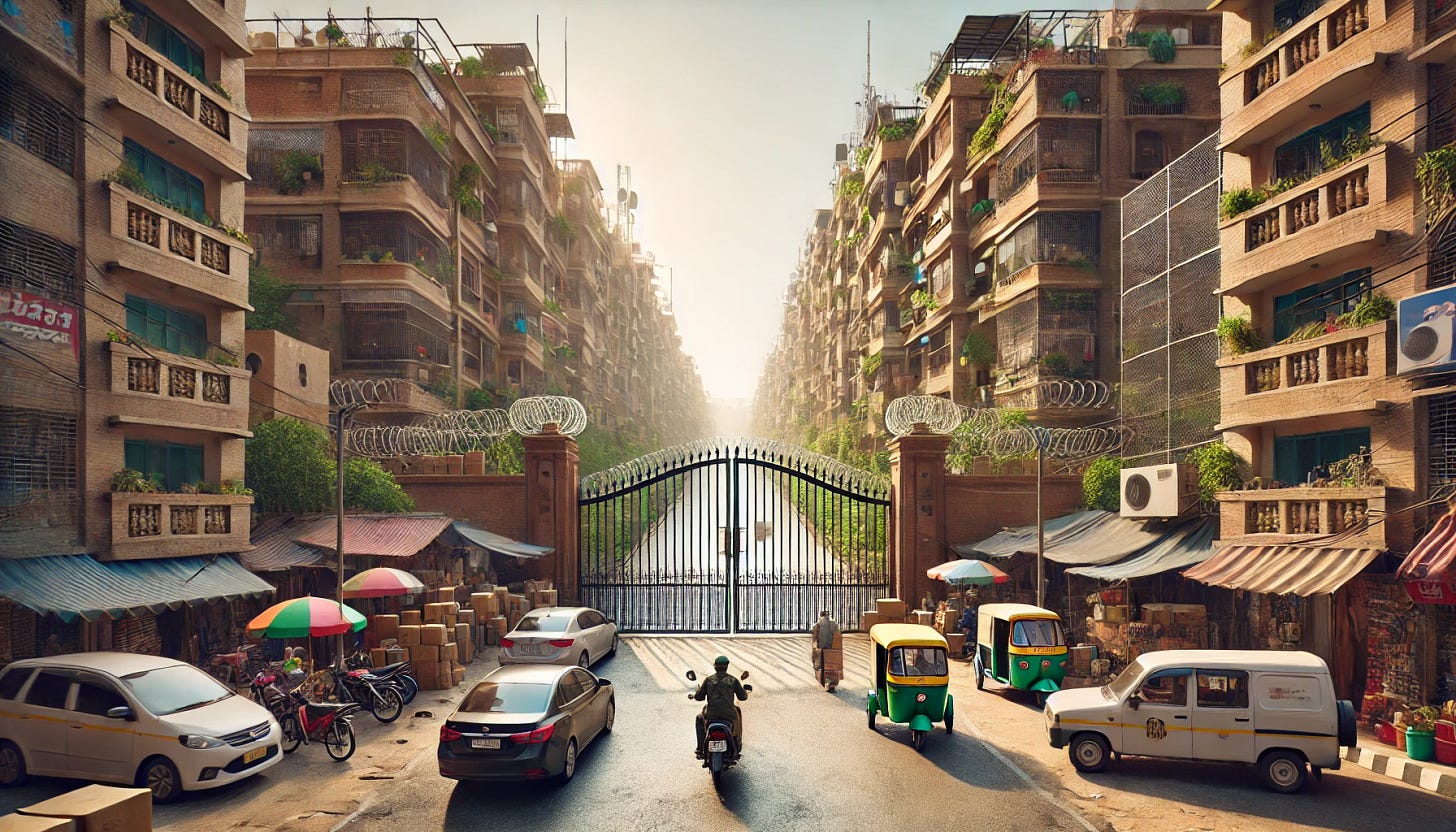Gated societies are coded into Delhi's DNA
How Delhi Development Authority allocates land plays a huge role in turning Delhi into a collection of walled societies, devoid of neighbourhoods.
Tall fortified boundary walls. Barbed wires on top of them. The visual gives the impression of military, even a border crossing. In Delhi, unfortunately, behind these walls are places of residence where people live.
The usual suspect for wanting a gated society is lack of safety. Poor rule of law requires fortification and screening of people. People choose to band together, and create their own islands, when they have to take care of safety privately. This is a response to state failure. But it is possible that walls and a series of them in Delhi did not appear as a reaction to poor rule of law, alone. Rules laid out by the state and its agencies are a culprit that make Delhi a city of fragments, stitched by trunk roads.
The structure and power vested in Delhi Development Authority (DDA) sets it apart from any other city agency in India. It is an agency governing on local level with federal powers. This is a huge mismatch. It is this agency that is responsible for coding gated societies into the DNA of Delhi.
Just skimming the DDA Act, 1957 can give a sense of the wide discretion and power baked in to acquire, alter, and allocate land. Section 15 and section 22 are of particular significance when it comes to housing. Section 15 lays out rules of compulsory land acquisition, should the DDA want to, if a land parcel falls into the development plan, created by the agency itself. Section 22 lays out a category of “nazul land“. These are land parcels that are passed on by the central government to the authority for allocation.
DDA made rules on how it will allocate nazul land through DDA Rules, 1981. Under clause 17 it prohibits allocation of land to individuals for residential purpose. The only way to obtain land for residence is under Clause 21, which makes it mandatory to form a co-operative housing society to apply for land allocation. This rule was revoked in 2021. But all along when land was in abundance, it stayed in operation. To be sure, the laws lay down that the existence of a cooperative housing society must precede the allocation of land, and even the making of buildings to live in it. This is unnatural. Creating a society too is a series of legal hurdles framed under the Delhi Cooperative Society Act, 1982.
Another point to note is, to which housing society the land will be allocated isn’t clear. The norm is usually to allocate land through auctions. But DDA offers it on a “pre-determined” rate, so using prices as a way to allocate land goes out of the window. This opacity is also an opportunity for DDA officers to make gains from. No wonder the agency has a reputation for officers who seek private fees.
Cooperative housing societies that get created are no different from clubs. A club by definition is exclusionary. It is for it’s members only. The physical manifestation of exclusion is the building of walls and screening to make sure only members enter it. Or in other words creating a gated society. A large share of Delhi has come together this way. A potential root cause for why gated societies are the norm in Delhi is to do with the way DDA went about allocating land for residence.
Here are some names of cooperative housing societies spread across Delhi:
Naval Technical Officers CGHS, Dwarka
Rashtrapati Bhavan Cabinet Affairs CGHS, Dwarka
Airforce and Naval Officers Enclave, Dwarka
Delhi Teachers CGHS LTD, Adarsh Nagar
Judges Enclave, Ghaziabad
The Apple traders CCGHS, Geeta Colony
Young Lawyers Welfare Association CGHS LTD, G.T.B. Nagar
Textile Coop. Group Housing Society Ltd., Prasant Vihar
All India Govt. Employees Coop. HB Society Ltd., Kiran Vihar
New Okhla Entrepreneurs CGHS Ltd, New Okhla
Bima Nigam Karamchari CGHS Ltd., Asaf Ali Road
Pharmaceutical Group Housing Society, IP Extension
IIITD Teachers CGHS LTD, Mayur Vihar
DDA Engineers Group Housing Society, Dwarka
It is remarkable how they almost sound like names of various interest groups. Delhi has unfortunately become a large collection of such gated societies. And this has been by design.


